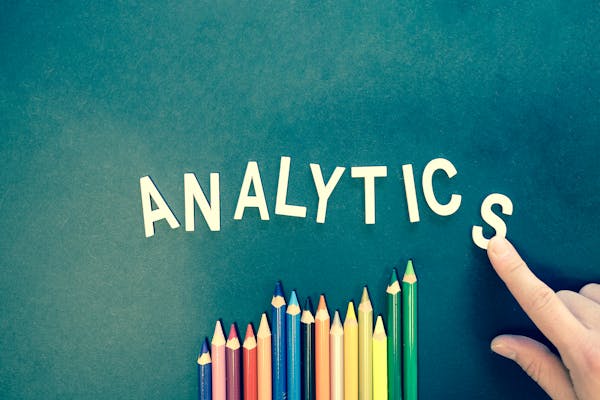In today’s data-driven world, businesses have access to an unprecedented amount of information. From customer preferences and purchasing patterns to operational efficiency and financial performance, the data generated by businesses is vast and valuable. However, the true power of this data is unlocked through analytics. Analytics in business refers to the process of systematically analyzing data to make informed decisions, optimize processes, and drive growth. The benefits of analytics in business are profound, offering companies the tools they need to stay competitive, agile, and customer-focused.
The Evolution of Business Analytics
The concept of using data to inform business decisions is not new. However, the scale, speed, and complexity at which data is generated today have transformed the landscape of business analytics. In the past, businesses relied on simple descriptive analytics, which involved looking at historical data to understand what happened. While this approach provided some insights, it was often reactive rather than proactive.
With advancements in technology, businesses have moved towards more sophisticated forms of analytics. Predictive analytics allows companies to forecast future trends and behaviors based on historical data, while prescriptive analytics goes a step further by recommending actions to achieve desired outcomes. These advanced forms of analytics enable businesses to anticipate challenges, seize opportunities, and make strategic decisions with greater confidence.
The Types of Business Analytics
To fully grasp the benefits of analytics in business, it’s essential to understand the different types of analytics and how they are applied.
- Descriptive Analytics: This is the most basic form of analytics, focusing on summarizing historical data to understand what has happened in the past. It is often used to generate reports and dashboards that provide a snapshot of business performance. Descriptive analytics is crucial for understanding trends, identifying patterns, and measuring key performance indicators (KPIs).
- Diagnostic Analytics: Diagnostic analytics goes beyond description to explore the reasons behind certain trends or events. It answers the question of “why did this happen?” by drilling down into the data and identifying correlations or anomalies. This type of analytics is particularly useful for uncovering root causes of problems and making data-driven improvements.
- Predictive Analytics: Predictive analytics uses historical data, machine learning, and statistical models to forecast future outcomes. By identifying patterns in past data, businesses can predict customer behavior, market trends, and potential risks. This foresight enables companies to proactively address challenges and capitalize on emerging opportunities.
- Prescriptive Analytics: The most advanced form of analytics, prescriptive analytics not only predicts future outcomes but also suggests actions to achieve specific goals. It leverages artificial intelligence (AI) and optimization algorithms to provide decision-makers with recommendations that maximize business performance. Prescriptive analytics is particularly valuable in complex, dynamic environments where multiple factors influence outcomes.
The Benefits of Analytics in Business
The application of analytics in business offers numerous benefits that can significantly impact a company’s success. Below are some of the key advantages:
- Enhanced Decision-Making: One of the most significant benefits of analytics in business is the ability to make data-driven decisions. By analyzing data, businesses can move beyond intuition and gut feelings to make informed choices backed by evidence. This leads to more accurate predictions, better resource allocation, and improved strategic planning.
- Increased Efficiency and Productivity: Analytics can identify inefficiencies in business processes and suggest ways to optimize them. For example, by analyzing supply chain data, companies can streamline operations, reduce costs, and improve delivery times. In manufacturing, analytics can be used to predict equipment failures and schedule maintenance proactively, minimizing downtime and maximizing productivity.
- Improved Customer Understanding and Engagement: Analytics provides deep insights into customer behavior, preferences, and needs. By analyzing customer data, businesses can segment their audience, personalize marketing campaigns, and tailor products or services to meet specific demands. This level of personalization enhances customer satisfaction, loyalty, and lifetime value.
- Risk Management: Every business faces risks, whether related to finance, operations, or reputation. Analytics plays a crucial role in identifying, assessing, and mitigating these risks. For example, predictive analytics can forecast market fluctuations, allowing businesses to adjust their strategies accordingly. Similarly, fraud detection systems use analytics to identify suspicious activities and prevent financial losses.
- Innovation and Competitive Advantage: In a rapidly changing market, innovation is key to staying ahead of the competition. Analytics enables businesses to identify emerging trends, understand market gaps, and develop new products or services that meet unmet needs. By leveraging data to drive innovation, companies can differentiate themselves from competitors and maintain a competitive edge.
- Financial Performance: Analytics provides businesses with a clear understanding of their financial health. By analyzing financial data, companies can monitor cash flow, identify cost-saving opportunities, and optimize pricing strategies. This financial insight is essential for making strategic investments, managing budgets, and ensuring long-term profitability.
- Supply Chain Optimization: The supply chain is a critical component of many businesses, and analytics can significantly improve its efficiency. By analyzing data related to inventory levels, demand forecasts, and supplier performance, companies can optimize their supply chain operations. This results in reduced costs, faster delivery times, and improved customer satisfaction.
- Human Resources Management: Analytics is increasingly being used in human resources (HR) to optimize talent management. By analyzing employee data, businesses can identify trends related to employee turnover, productivity, and satisfaction. This information helps HR professionals make data-driven decisions regarding recruitment, training, and retention strategies.
- Market and Competitor Analysis: Understanding the market and competitors is essential for any business. Analytics provides valuable insights into market trends, customer preferences, and competitor strategies. By analyzing this data, businesses can identify opportunities for growth, adjust their pricing models, and refine their marketing strategies to gain a competitive advantage.
- Sustainability and Corporate Social Responsibility (CSR): Analytics can also play a role in promoting sustainability and CSR initiatives. By analyzing data related to resource consumption, waste production, and carbon emissions, businesses can identify areas for improvement and implement sustainable practices. This not only benefits the environment but also enhances the company’s reputation and compliance with regulatory requirements.
Real-World Examples of Analytics in Business
To illustrate the benefits of analytics in business, let’s explore some real-world examples of companies that have successfully leveraged data to drive growth and innovation.
- Amazon: Amazon is a prime example of a company that has mastered the use of analytics. The e-commerce giant uses predictive analytics to recommend products to customers based on their browsing and purchasing history. This personalized approach has significantly increased sales and customer loyalty. Additionally, Amazon’s supply chain operations are optimized through data analytics, ensuring that products are delivered efficiently and on time.
- Netflix: Netflix relies heavily on analytics to understand viewer preferences and recommend content that is likely to be of interest. By analyzing viewing patterns, Netflix can predict which shows and movies will be popular and invest in original content that aligns with audience preferences. This data-driven approach has been a key factor in Netflix’s success as a leading streaming platform.
- Walmart: Walmart uses analytics to optimize its inventory management and supply chain operations. By analyzing sales data, Walmart can accurately forecast demand and ensure that products are stocked in the right quantities at the right locations. This has helped Walmart reduce costs, minimize stockouts, and improve customer satisfaction.
- Procter & Gamble (P&G): P&G uses analytics to drive product innovation and marketing strategies. By analyzing consumer data, P&G can identify emerging trends and develop new products that meet changing customer needs. Additionally, P&G uses predictive analytics to optimize its advertising spend and improve the effectiveness of its marketing campaigns.
- Coca-Cola: Coca-Cola leverages analytics to gain insights into consumer preferences and optimize its product offerings. By analyzing social media data, Coca-Cola can identify trends and adjust its marketing strategies accordingly. The company also uses predictive analytics to forecast demand and optimize its supply chain operations.
Challenges and Considerations
While the benefits of analytics in business are clear, it’s important to acknowledge the challenges that companies may face when implementing analytics initiatives.
- Data Quality and Accessibility: The accuracy of analytics depends on the quality of the data being analyzed. Inaccurate or incomplete data can lead to misleading insights and poor decision-making. Additionally, businesses may struggle with data accessibility, particularly if data is siloed across different departments or systems.
- Data Privacy and Security: As businesses collect and analyze vast amounts of data, they must also prioritize data privacy and security. Ensuring compliance with regulations such as the General Data Protection Regulation (GDPR) is essential to protect customer data and maintain trust.
- Skill Gaps: Implementing advanced analytics requires specialized skills, including data science, machine learning, and statistical analysis. Businesses may face challenges in recruiting and retaining talent with these skills, particularly in a competitive job market.
- Cost and Resource Allocation: Building and maintaining analytics infrastructure can be costly, particularly for small and medium-sized enterprises (SMEs). Businesses must carefully consider the costs and resources required to implement analytics initiatives and ensure that they align with their strategic goals.
- Change Management: Adopting analytics-driven decision-making may require a cultural shift within the organization. Employees and leaders must be willing to embrace data-driven insights and move away from traditional decision-making processes based on intuition or experience.
Conclusion:
As technology continues to evolve, the role of analytics in business will only grow in importance. The integration of artificial intelligence (AI) and machine learning into analytics will enable businesses to gain even deeper insights from their data and automate decision-making processes. Additionally, advancements in data visualization tools will make it easier for decision-makers to interpret complex data and act on insights in real time.
Moreover, the increasing availability of big data and the Internet of Things (IoT) will provide businesses with even more data to analyze. This will open up new opportunities for businesses to optimize their operations, enhance customer experiences, and drive innovation.




